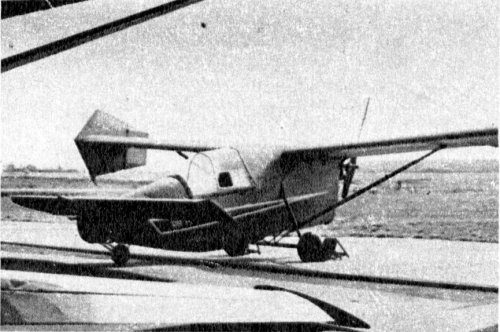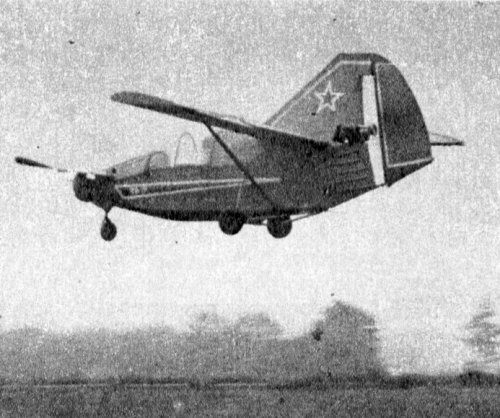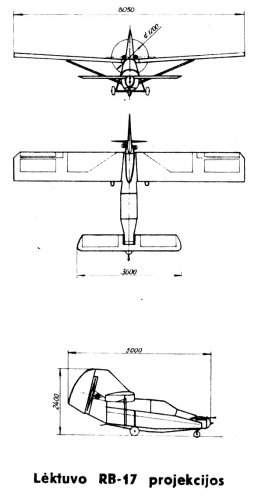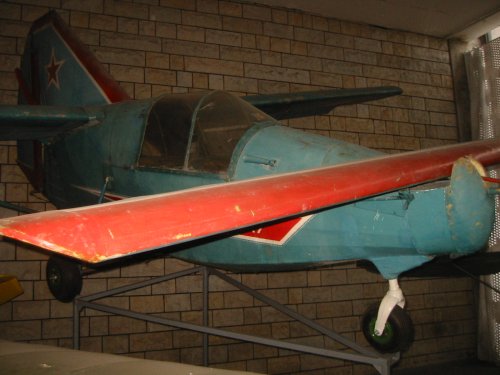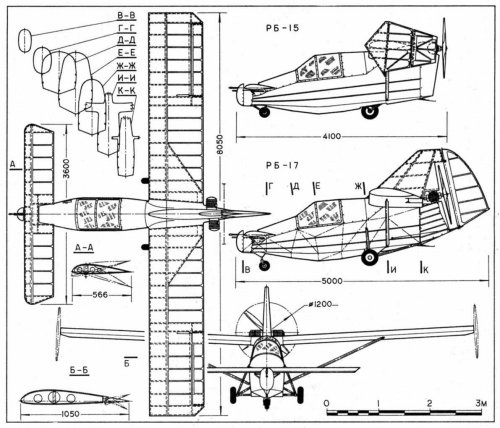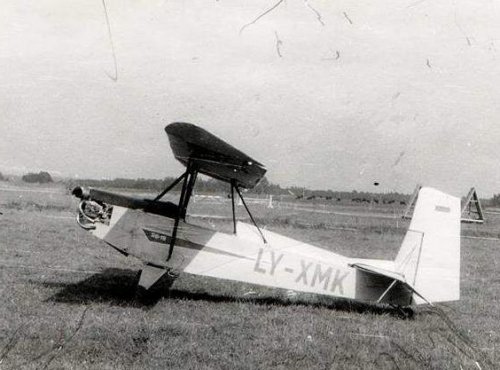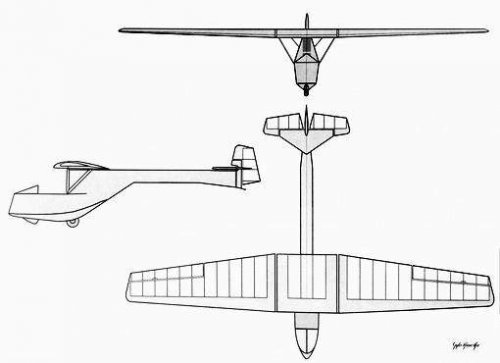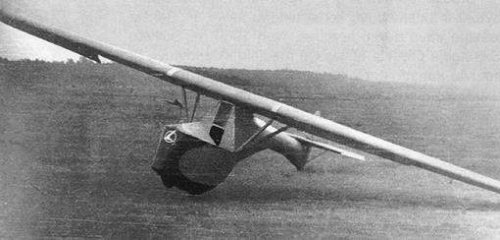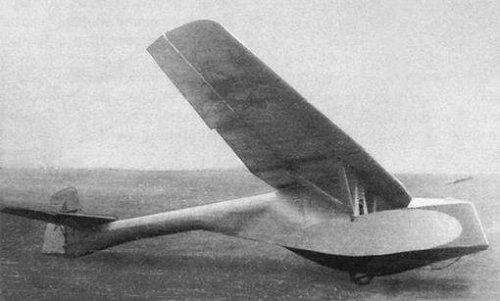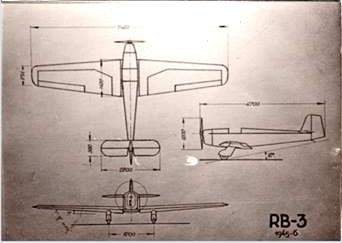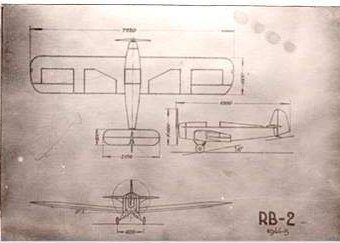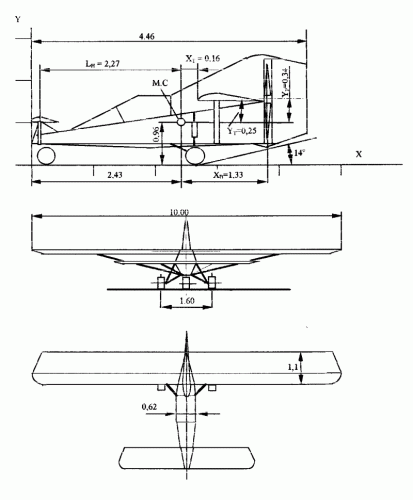Retrofit
ACCESS: Top Secret
- Joined
- 21 February 2007
- Messages
- 656
- Reaction score
- 338
Romas Betska RB-17:
In 1947 Romas Beksta designed the glider RB-4, a canard type glider with auxiliary 4 HP engine but the aircraft is not constructed.
In 1972 Romas started the design of a canard type airplane and at the same year he started to construct it. After two years tests on ground werezstarted: A lot of problems with the engine (a one cylinder Iz-56 motorbike engine; Usually on the homebuilt aircraft, constructers used Russian motorbikes engines). Romas made a new 2 cylinders opposite engine. During the test the airframe, propeller and the engine were modified. On October the 9th, 1977, the RB-15 aircraft made a first flight. The results of the flight weren’t good. Romas improved the aircraft and in 1979 the aircraft was totally reconstructed as RB-17. The end plates of the wing were replaced by a single fin at the back of the fuselage. Between the keel and rudder was mounted the propeller. On September the 2nd, 1979, the RB-17 aircraft made its first flight. The main wing is one spar and is made from wood. The struts of the wing are made from metal. The wing shape is TsAGI R-II-14. Forward wing have one spar and it is made from wood. Airfoil TsAGI-R-II-18. Fuselage – steel tubes covered with fabric material. Engine cowlings and fuselage top is made from duralumin sheets. The chassis struts is made from titanium tubes.
This aircraft is now on display at the Aviation Museum of Kaunas.
The main technical data (in the brackets are RB-15 data):
Wingspan:: 8,05 m (8,4 m).
Wing area: 9 m²
Canard wingspan: 3,6 m
Canard wing area: 3,6 m²
Length: 5 m (4,1 m)
Height: 2,4 m (1,95 m)
Take-off weight: 320 kg (305 kg)
Take-off speed: 60 km/h
Max speed: 110 km/h
Engine power: 25 HP.
In 1947 Romas Beksta designed the glider RB-4, a canard type glider with auxiliary 4 HP engine but the aircraft is not constructed.
In 1972 Romas started the design of a canard type airplane and at the same year he started to construct it. After two years tests on ground werezstarted: A lot of problems with the engine (a one cylinder Iz-56 motorbike engine; Usually on the homebuilt aircraft, constructers used Russian motorbikes engines). Romas made a new 2 cylinders opposite engine. During the test the airframe, propeller and the engine were modified. On October the 9th, 1977, the RB-15 aircraft made a first flight. The results of the flight weren’t good. Romas improved the aircraft and in 1979 the aircraft was totally reconstructed as RB-17. The end plates of the wing were replaced by a single fin at the back of the fuselage. Between the keel and rudder was mounted the propeller. On September the 2nd, 1979, the RB-17 aircraft made its first flight. The main wing is one spar and is made from wood. The struts of the wing are made from metal. The wing shape is TsAGI R-II-14. Forward wing have one spar and it is made from wood. Airfoil TsAGI-R-II-18. Fuselage – steel tubes covered with fabric material. Engine cowlings and fuselage top is made from duralumin sheets. The chassis struts is made from titanium tubes.
This aircraft is now on display at the Aviation Museum of Kaunas.
The main technical data (in the brackets are RB-15 data):
Wingspan:: 8,05 m (8,4 m).
Wing area: 9 m²
Canard wingspan: 3,6 m
Canard wing area: 3,6 m²
Length: 5 m (4,1 m)
Height: 2,4 m (1,95 m)
Take-off weight: 320 kg (305 kg)
Take-off speed: 60 km/h
Max speed: 110 km/h
Engine power: 25 HP.

